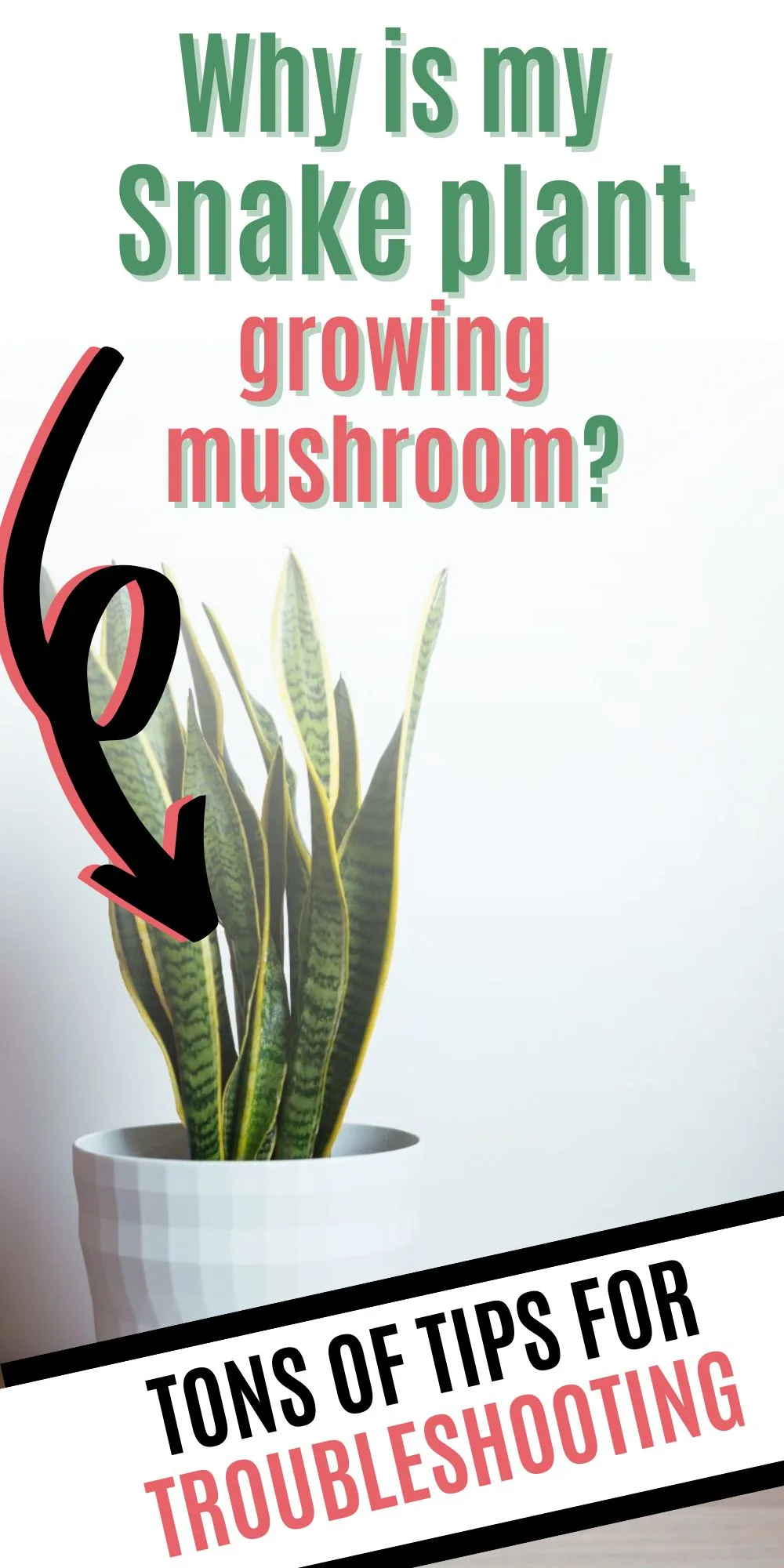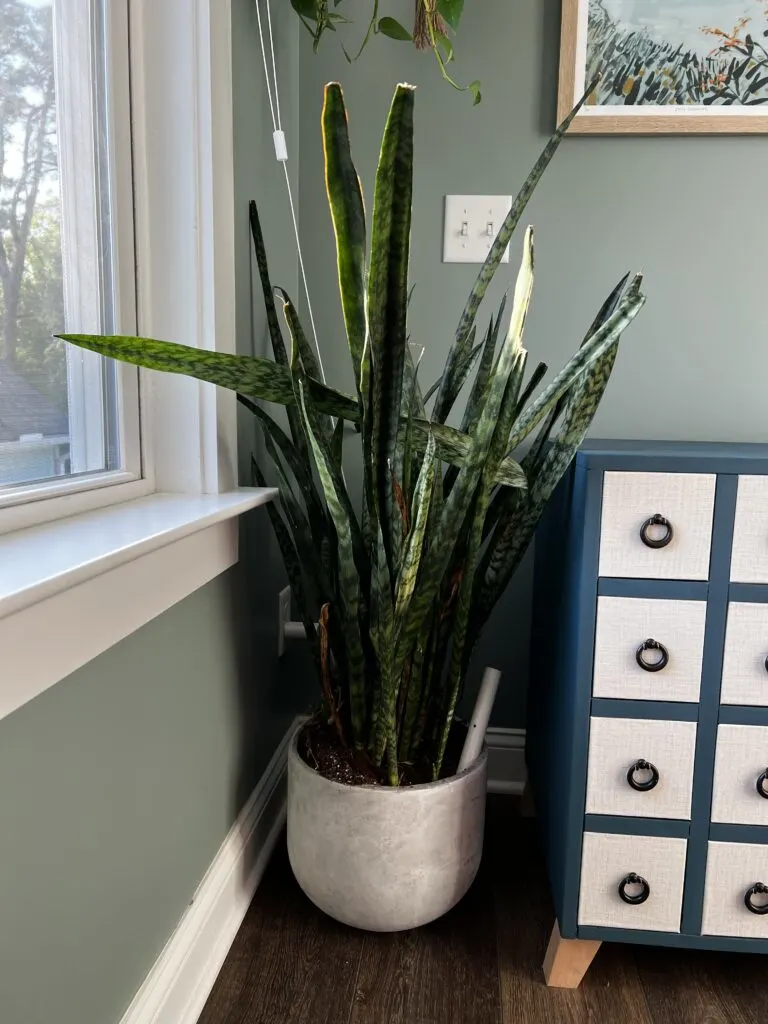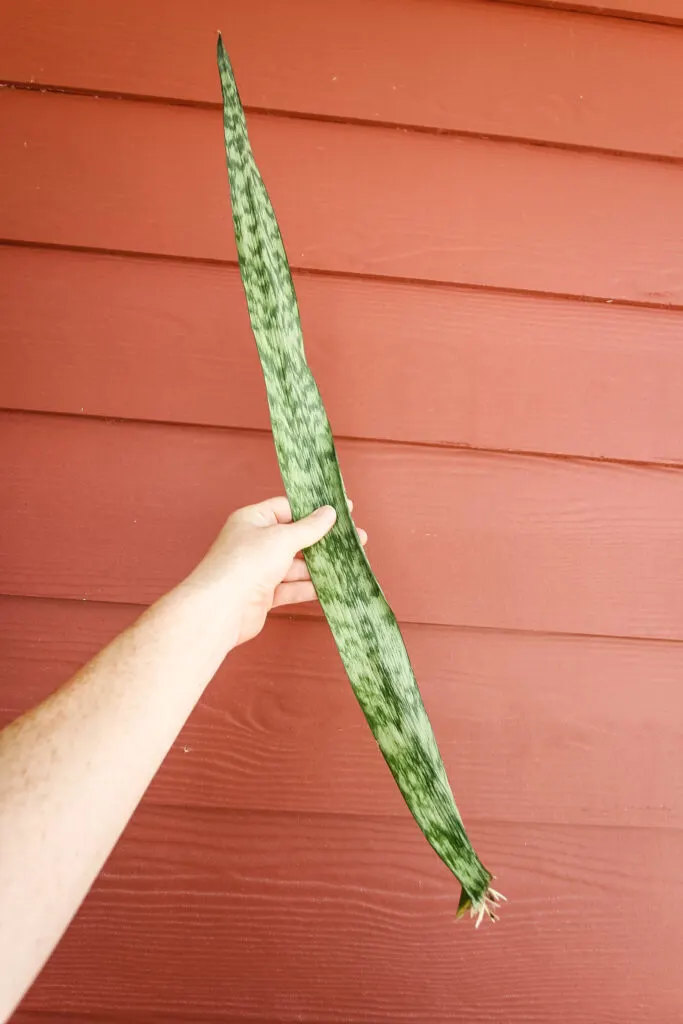Noticing fungi during your snake plant care routine? Get the best practices for handling snake plant growing mushrooms, and maintaining plant health.
Finding mushrooms on your snake plant can be pretty surprising, right? But don’t worry, it’s actually pretty common with houseplants.
Mushrooms are spread via tiny airborne spores and grow quickly under the right conditions.
While they’re usually harmless to your plants, be careful because they can be toxic if eaten by pets or people.
To stop mushrooms from growing on your snake plant, it’s good to know why they show up and what kind of environment they like.
We’re going to cover all of that in this guide, so keep reading!

Why is my snake plant growing mushrooms?
Wondering why your snake plant has mushrooms?
Well, these mushrooms come from tiny spores that travel through the air, often brought in by wind, pets, us, or even some potting mixes.
They develop in warm, damp, and humid environments, which makes houseplants particularly susceptible to them.
Overwatering your snake plant is a common reason for mushrooms since they thrive in moist conditions.
In this case, try changing your watering routine – let the plant dry out completely before giving it a good soak again.
If the soil feels moist a lot, it might be a drainage issue. In that case, think about repotting your snake plant in soil that drains better.
Also, mushrooms like dark, shady places. So, make sure your plant gets enough sunlight every day!

Are mushrooms in snake plant dangerous?
Mushrooms in snake plants usually aren’t harmful to the plants, but they can be toxic to humans and pets if eaten.
Interestingly, some experts say it’s okay to leave the mushrooms alone. They help break down organic matter in the soil, giving your plant some much-needed nutrients.
Plus, mushrooms can send your snake plant chemical signals through the roots, alerting it to possible insect attacks and helping it strengthen its defenses.
However, mushrooms can also be a sign of root rot in snake plants. So check for other symptoms, such as brown and dry roots and soft yellow-tinged leaves, to see if this may be the case.

How to get rid of mushrooms in Snake Plant
The simplest way to get rid of the mushrooms growing in your plant is to remove the caps using your hands and a pair of gardening gloves.
The earlier you do this, the better, as it prevents the mushrooms from spreading further.
Although it’s likely for the mushrooms to grow back through microscopic spores, pulling them out keeps kids and pets safe and your plant looking neat.
If you want to permanently eliminate the mushrooms, you’ll need to repot your snake plant in fresh and uncontaminated soil.
Consider doing the same for nearby plants to prevent spore spread. And don’t forget to wash the pots with soap and hot water.
To keep mushrooms away, avoid overwatering – it creates the perfect damp and humid environment for them.
Regularly clean your plant by removing dead leaves, as these can contribute to mushroom growth as well.
You can also try natural fungicides, like neem oil or baking soda.
Before you go…
Under the right conditions, mushrooms can appear on your snake plant’s soil overnight. They can spread to other plants or completely disappear just as fast!
The key is to identify factors in your environment that allowed them to thrive in the first place, such as moisture levels, lack of light, and humidity, and to tackle the root cause immediately.
For more tips on keeping your snake plant and other houseplants healthy and mushroom-free, download my free printable houseplant quickstart guide.
Together, let’s keep your snake plant strong, healthy, and mushroom-free!
Thanks for reading!


Hey there, I’m Morgan, a houseplant enthusiast from sunny Charleston, South Carolina. Growing up surrounded by my mom’s lush orchids and African violets, I discovered the magic of bringing nature indoors. Thanks to the pandemic, I delved deeper into houseplants, discovering their power to uplift moods and transform spaces. I’m here to spill all my secrets, helping you pick the perfect houseplant – and make it happy. Let’s keep your plants alive, together! 😊
